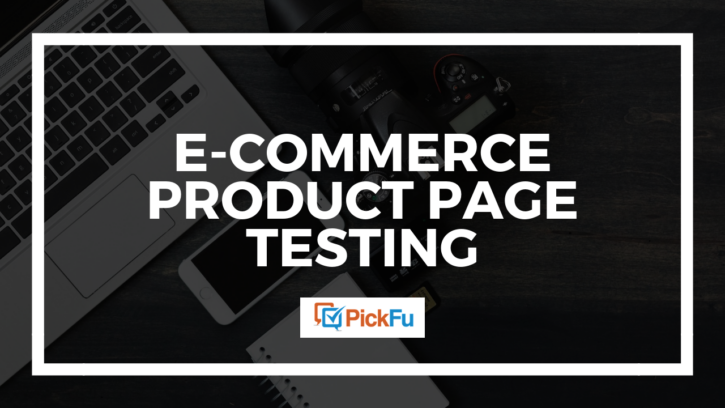When you’re selling online, e-commerce product page testing is a must. Why? Optimizing your listing ensures that you’re presenting your merchandise in a way that makes people as likely as possible to buy.
The way to accomplish this is with A/B testing (also called split testing). A/B testing is the process of using two versions of a web page on an audience to compare performance. A traditional split test directs a portion of your website traffic to one version of a page and directs another portion of your website traffic to a different version of that page. PickFu’s split testing is slightly different: instead of testing live, you can create a poll before your product launches and test ideas on an audience in a sandbox environment. PickFu provides the respondents and you’ll get results in as little as a few minutes.
The first step in e-commerce product page testing is to choose one variable at a time to test, such as product photos, product name, or color scheme. Next, choose a testing method, such as a traditional live split test or a PickFu poll. Then, determine your target demographic and craft a perfectly worded question to pose to them. After the results roll in, dive into your valuable data and use it to improve your product page.
1. Decide what to test
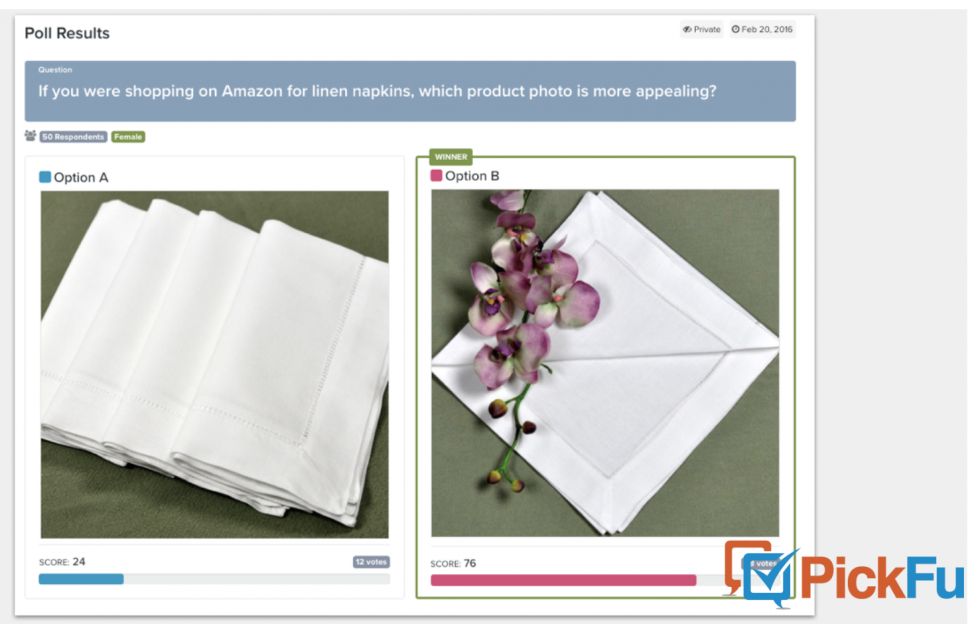
Hopefully, you’ve spent some time optimizing every part of your product page. Aspects that you should be optimizing include product name, photos, description, call-to-action, and price. Choose one variable to test at a time and keep the others constant.
2. Determine your method of testing
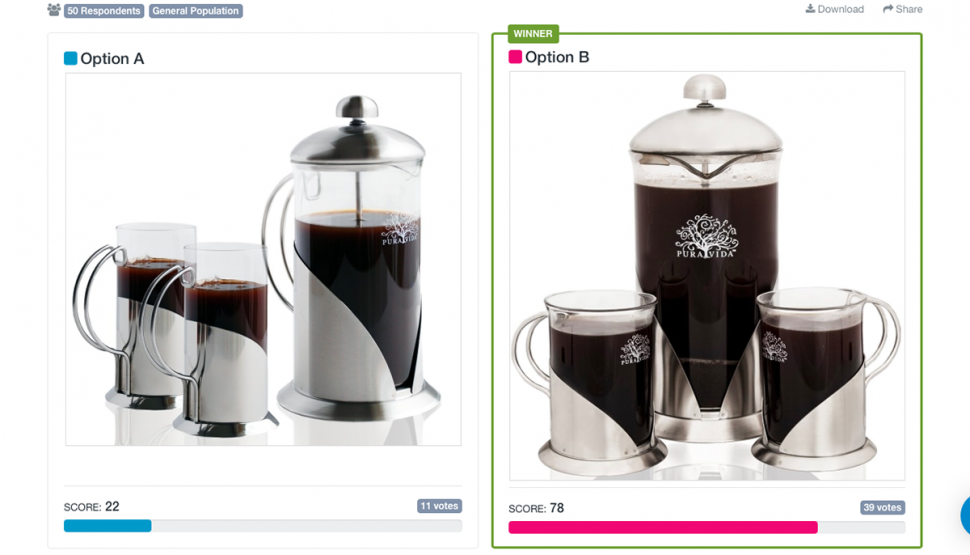
A traditional split test (one that sends two different user groups to two different versions of a page) has a major downside: you can only test after your page is already live. All the experimenting could hurt your sales or your search engine ranking.
By contrast, with a PickFu poll, you can A/B test your product page in a sandbox environment before you launch it. You’ll have the peace of mind that comes with knowing that your product is optimized from the get-go. This article will focus on split-testing using PickFu polls.
3. Write your question
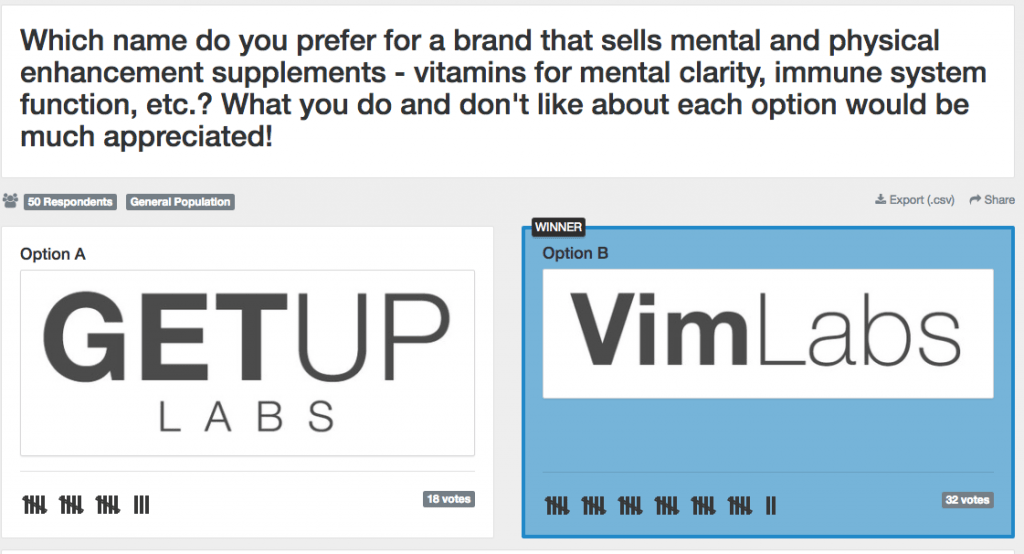
You’ll want to put some thought into writing an unbiased, grammatically correct question. Your audience is coming into the poll without any familiarity with your product, and this is actually ideal. Make sure you aren’t unknowingly biasing your audience when you word your question. Biased questions lead to biased answers. There are three mistakes you want to watch out for when writing unbiased questions:
- First, don’t use leading words. You don’t want to project a positive or negative bias on your respondents. For example, the following is a biased question: “How much did you enjoy this YouTube video?” The word enjoy will make viewers feel like they are expected to like the video and they will be influenced to answer more favorably. Instead, phrase the prompt objectively like this: “On a scale of 1-5, with 1 being the worst and 5 being the best, please rate this YouTube video.”
- Second, avoid assumptions. For example, the question “Where do you like to party?” assumes respondents like to party. Instead, structure questions based on facts, not opinions. A better question would be, “What do you like to do in the evenings?”
- Third, avoid double-barreled questions. A double-barreled question asks two disparate things but only allows for a single answer. Some participants might only respond to one of the questions, which is frustrating. Double-barreled questions should be separated into two distinct questions and polled separately. For example, the double-barreled question “Which title and subtitle do you prefer?” would become two questions: “Which title do you prefer?” and “Which subtitle do you prefer?”
4. Find your audience
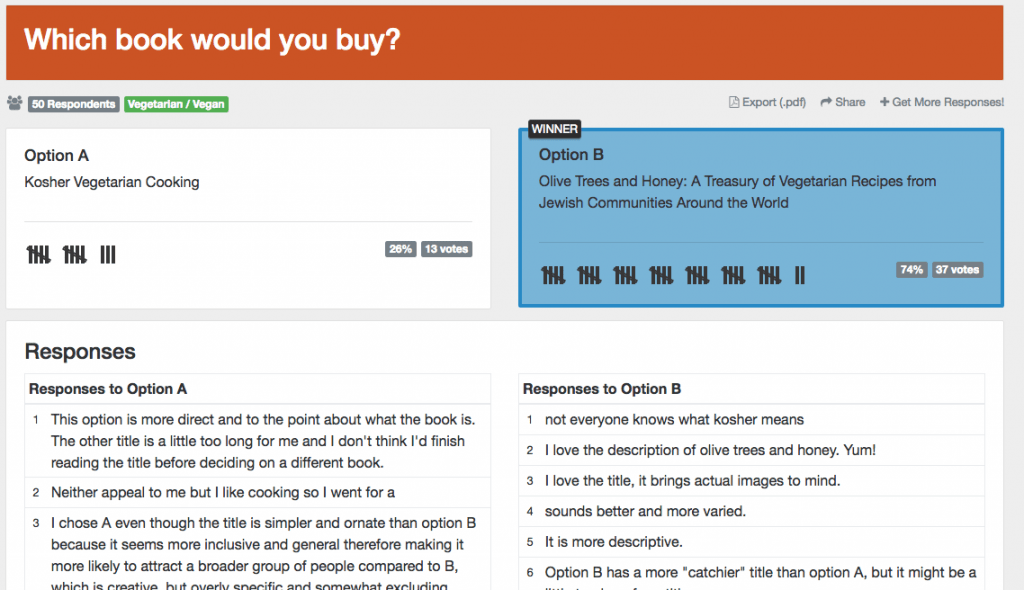
It’s logical that you’d want to poll people who are more likely to buy your product. PickFu enables you to customize your poll’s target demographic by age range, gender, ethnicity, Amazon Prime membership, interests, and more.
5. Interpret your results

So, you’ve followed the steps to create a perfect PickFu poll, and your results come back. Exciting! You’ll be able to tell the winner (A or B … or C or D) right away. But you also want to dive into the valuable written comments to learn why the winner prevailed. There will usually be a few key reasons people cite to explain why they made their choice, and it’s crucial that you take stock of these: they will likely reveal some important takeaways. Was there a word or phrase that many respondents used that shed a light on an aspect of your product? Don’t forget to play with the filters to look for splits among demographics. Perhaps the majority of males liked Option A, but the majority of females did not. For lessons and analysis from past polls, take a look at our weekly Which One Won? column.
E-commerce product page testing will help make sure your page is perfectly optimized before you publish it. Remember: optimized e-commerce websites mean better sales. Keep this guide handy while you create your next PickFu poll.
